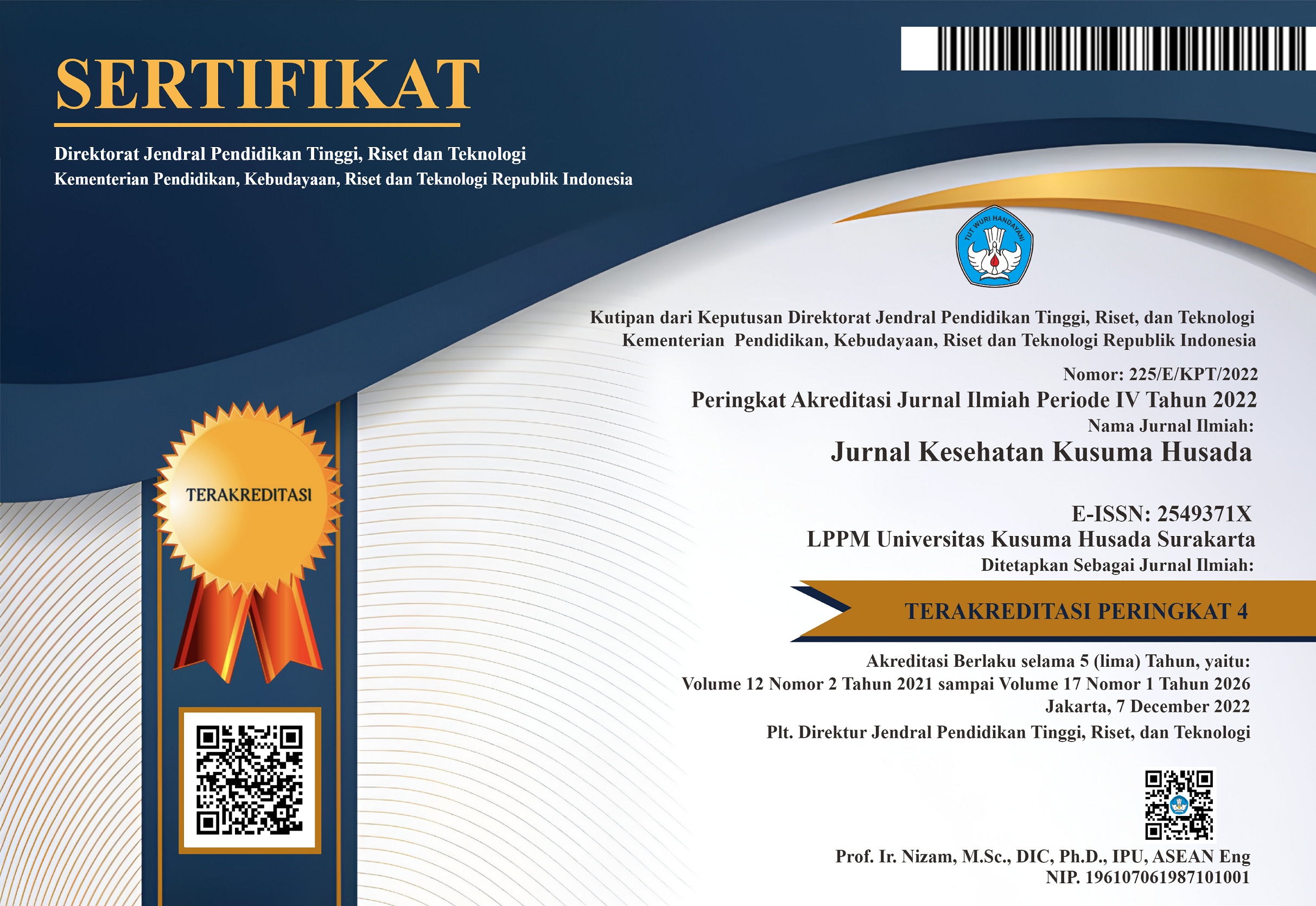POTENSI ANTIBAKTERI EKSTRAK ETANOL HERBA MENIRAN HIJAU (Phyllanthus niruri Linn.) DALAM MENGHAMBAT PERTUMBUHAN STAPHYLOCOCCUS AUREUS
Abstract
Penggunaan bahan alam semakin meningkat dan masih menjadi andalan di beberapa negara berkembang. Penelitian kali ini menggunakan ekstrak etanol dari herba Phyllanthus niruri Linn. Dalam usaha menghambat pertumbuhan Staphylococcus aureus. S. aureus merupakan salah satu mikroflora normal di wajah yang berperan dalam infeksi jerawat. Penelitian ini merupakan penelitian eksperimental menggunakan Rancangan Acak Lengkap dengan 7 perlakuan dan 5 ulangan. Perlakuan yang digunakan adalah pemberian ekstrak etanol herba P. niruri Linn. untuk konsentrasi 5%; 25%; 50%; 75%; 100%, pengenceran menggunakan pelarut DMSO 10%. Kontrol positif menggunakan ciprofloxacin, sedangkan kontrol negatif menggunakan DMSO 10%. Zona hambat yang diperoleh dianalisis menggunakan uji Kolmogorov–Smirnov dan uji homogenitas Levene. Apabila variansi data homogen, maka dilanjutkan analisis dengan Anova yang dilanjutkan dengan uji Post Hoc. Dari perhitungan kontrol negatif, variasi konsentrasi (5%, 25%, 50%, 75%, 100%) dan kontrol positif diperoleh rata-rata zona radikal berturut sebesar 6 mm; 7,46 mm; 7,52 mm; 7,6 mm; 8,52 mm; 8,98 mm; 31,08 mm. Semua variasi konsentrasi ekstrak etanol herba P. niruri Linn. mampu menghasilkan zona hambat radikal dengan zona hambat terbesar tetap dijumpai pada kontrol positif. Hal ini menunjukkan bahwa konsentrasi ekstrak etanol herba P. niruri Linn. yang semakin besar akan berbanding lurus dengan peningkatan aktivitas penghambatan, namun belum seoptimum kontrol positif.
The use of natural materials is increasing and is still a mainstay in several developing countries. This research was used ethanol extract from herb Phyllanthus niruri Linn. in an effort to inhibit the growth of Staphylococcus aureus. S. aureus is one of the normal microflora on the face that helps infection. This research is an experimental study used a completely randomized design with 7 preparations and 5 replications. The treatment used ethanol extract of P. niruri Linn herb. for a concentration of 5%; 25%; 50%; 75%; 100%, the dilution used 10% DMSO solvent. Positive controls used ciprofloxacin, while negative controls used DMSO 10%. The inhibition zone obtained was analyzed using the Kolmogorov-Smirnov test and the Levene homogeneity test. If the data variance is homogeneous, then the analysis is continued with ANOVA followed by the Post Hoc test. From the calculation of negative controls, various concentration (5%, 25%, 50%, 75%, 100%) and positive controls obtained an average radical zone of 6 mm; 7.46 mm; 7.52 mm; 7.6 mm; 8.52 mm; 8.98 mm; 31.08 mm. All variations in the concentration of ethanol extract of P. niruri Linn. herbs able to produce a radical inhibition zone with the largest inhibition zone still found in positive controls. This showed that the greater concentration of ethanol extract of P. niruri Linn. herb. will be directly proportional to the increase in inhibition activity, but not optimal as much as positive control.
Copyright (c) 2019 Jurnal Kesehatan Kusuma Husada

This work is licensed under a Creative Commons Attribution 4.0 International License.
The copyright of the published articles belongs to Jurnal Kesehatan Kusuma Husada.

This work is licensed under a Creative Commons Attribution 4.0 International License.











